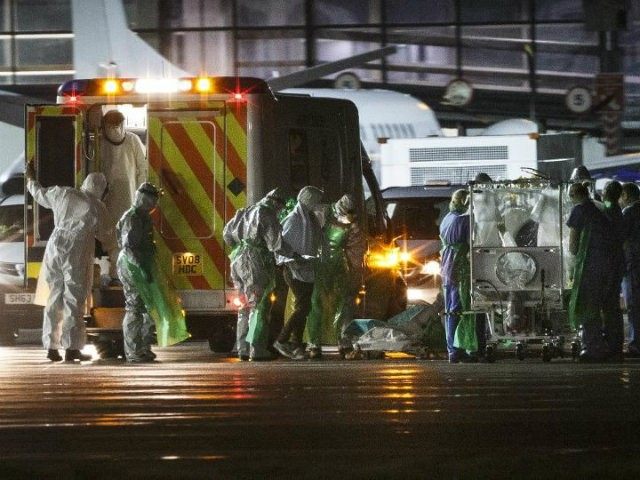Serious questions have been raised after the healthcare worker who became Britain’s first diagnosed case of Ebola was allowed to fly on from Heathrow despite expressing concerns about having contracted the virus, and being tested repeatedly.
The nurse who has now been named as Pauline Cafferkey, 39, was one of a small group of British healthcare professionals who flew out to West Africa with the Save the Children charity, returning to the United Kingdom in time for the new year. She flew from Freetown, Sierra Leone via Casablanca, where she was tested for Ebola, to London Heathrow, where British Ebola control policies meant she was tested again before catching a connecting flight to Glasgow, her home.
Despite passing the initial Ebola test at Heathrow control, the nurse was concerned she had contracted the virus and asked to be tested again. She received a further six tests, which showed she only had a slight temperature. The fact she subsequently developed full symptoms has led the chief medical officer to question whether the precautions in place are sufficient to protect the country from the ingress of Ebola virus.
Professor Dame Sally Davies said it may be time to review the 37.5C temperature threshold, and remarked: “She was cleared to travel because she did not have a significantly raised temperature. It does raise a question about whether we should be more precautionary”, reports The Guardian.
Writing for The Guardian newspaper, a doctor who worked and flew back with Nurse Cafferkey wrote of his “confidence” in the treatment centre, but went on to describe “early morning runs” and visits made to the local church for Christmas, without protective equipment. Doctor Deahl wrote that this “in hindsight was probably when we were at greatest risk”.
Deahl wrote of his surprise at the way his fellow medical workers were treated upon arrival back in the United Kingdom: “I was surprised that we weren’t segregated from other passengers on arrival at Terminal 4. Instead we filed off the plane and walked to immigration just like everybody else. At this point we were escorted to a crowded room next to the arrivals hall for our health check.
“This is when I began to feel uncomfortable. There appeared to be inadequate numbers of staff to deal with us and many queued for an hour waiting to be checked. My temperature was raised; the nurse testing it appeared to take a step back and looked nervous. I was isolated for 15 minutes before my temperature was rechecked and was then allowed to go on my way. In contrast to the strict no-touch policy in Sierra Leone, there were a fair few parting hugs and kisses around the baggage carousel”.
Significant concern has been raised over the screening regime at British airports, both at the time of its inception and now, following the failure to identify Nurse Cafferkey. Critics have called it a gesture policy, designed to appease public opinion rather than actually intercept infected individuals. Because passengers are screened as they board flights in West Africa already, to be effective in London the passengers have to develop full symptoms in the few hours between initial screening and landing in the United Kingdom.

COMMENTS
Please let us know if you're having issues with commenting.